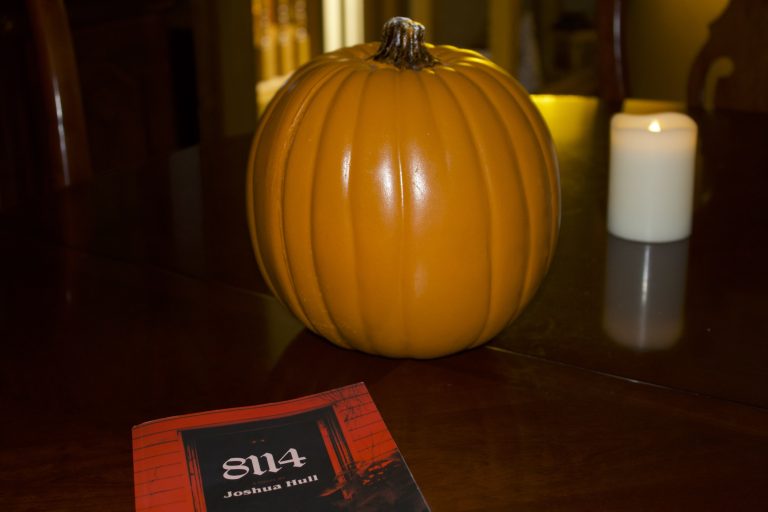Professor of History and Political Science Lawrence Sondhaus never dreamed of being a published writer. When he came to the University of Indianapolis in 1987, he thought he would just be a teaching professor.
“I thought, I’m going to be that kind of teaching professor, just focusing on my teaching, like the professors who were my role models from when I was an undergrad,” he said. “And then in September of ‘87, not even a month into my first semester here [at UIndy], Purdue University Press sent me the letter accepting this [my dissertation] for publication. And two years later, it came out, and I became an addict. I became addicted to seeing my name in print, and seeing words that I wrote published.”
Since publishing his dissertation, Sondhaus has had 11 other books published and currently is working on number 13, with an idea in the works for 14. He usually writes about naval and military strategy and policy. Sondhaus also wrote a textbook about World War I that was picked up by universities in Australia and in New Zealand, although that is not usually what happens with academic books, he said.

Associate Professor of English Jennifer Camden has written one book and is currently working on co-authoring another. She said that the main audience for her books is primarily other professors or students taking a course that requires the book.
The first book Camden wrote was a heavily revised version of her doctoral dissertation called “Secondary Heroines in Nineteenth-Century British and American Novels.” She said it took about 10 years to write and publish. After finishing her dissertation, she knew she wanted to turn it into a book.
“I realized how it [my dissertation] could be stronger, and that basically involved cutting half of it and starting over on that other half,” Camden said. “So it took a lot of time. So when we say revise means to revision, we practice what we preach. I didn’t just fix the punctuation and send it off.”
Camden said her current book should only take a year to write. It is about 19th century literature for a popular audience, focusing on Pemberley Digital and their series such as “The Lizzie Bennet Diaries” and “Frankenstein, MD.” She said the book has to have a much faster turn around as it deals with a current topic.
Sondhaus said he tends to get a book done in about three years, although at one time it was faster than that.
“I’m a really slow writer,” he said. “Like for me, five double-spaced pages a day, that’s a good day. When you’re writing a book, that’s not a lot.”
The book he is currently working on about German submarine warfare in WWI, was about 300 double-spaced pages when he sent his final draft to the publishing company. It took him from January to July to write, while on sabbatical.
While Sondhaus’ and Camden’s books come from an interest and a lot of research, Professor of Biology John Langdon said much of what he writes comes from the courses he teaches.
“I wrote my textbooks because I found I couldn’t find good sources for what I wanted to teach,” he said. “So it kind of developed from my own class notes and so forth.”
Langdon has written five books, including a publication of his doctoral dissertation and a co-edited book, with his three most recent being textbooks.
“Each one took many years to put together because I’d go back and rethink and change the orientation and rewrite,” he said. “For some of my classes, I will write extensive text notes for the students. So it was a matter of going from there to something that would have a more general context that other people could use in other classes.”
While it is more common to find a publisher before writing the book, Langdon said he wrote his textbooks and then attempted to find a publisher, which made the process a little different.
“For two of them, I had to go back and rethink it and then try it again,” he said. “[For the] third one, pretty much the first round of copies I sent out got a positive response. I think the key is to find a niche that isn’t covered, where you’re not trying to compete with things that are already out there.”
Sondhaus also said finding an area that has not been covered in depth is very important when pitching to a publisher. One way to have a press pick up a book is through a proposal. Each publishing company has a different format for submitting a proposal, and it can sometimes include sample chapters from the book.
Another way that authors get a contract to write a book is by getting a solicitation from a press. Since Sondhaus has written so many books and worked with many different publishers and editors, he said it is more common for him to get solicitations than when he was starting out. He said once published, an author gets a reputation and begins to know the publishing world and the editors at different presses, so it becomes easier to pitch or receive solicitations. Sondhaus said now he even negotiates with the publisher about the topic they want him to cover. According to Camden, a publisher also may pick an author because they have seen him or her present a conference paper or because they like his or her dissertation and think it would fit with what the company tends to publish.
In most cases, after an author receives a contract with a publisher for an academic book, he or she will do research for the book. Sondhaus said the process of doing research for writing historical books has changed a lot since he wrote his first books in the 1990s.
“I would have had to apply for a research grant a year ahead of time,” he said “get the funding, arrange to live in London for a summer and go to the archives and leaf through papers one at a time, the old-fashioned way.”
Sondhaus said now most archival records have been digitized, so it is more like shopping on Amazon. Sondhaus will select the documents he wants, enter his credit card number and have a link for the document sent to his email in about 10 minutes.
After the research process comes, of course, the writing stage. Camden said writing a book or book-length work can be daunting, but it’s important to break it down.
“Any book is made up of chapters, and each chapter is often, even in academic books … [made up of] subheadings and subsections. So by the time you kind of break it down to its pieces, it’s not that bad,” she said. “So for anyone thinking about writing a book, don’t be intimidated by the big process. Just remember to do one little piece at a time.… Take it in manageable chunks, and you’ll get there.”
After the book is written, it is sent to a publisher, who sends it to other academics with knowledge of the subject for a peer review.
According to Sondhaus, when a book is being edited, there is a blind review, in which the author does not know the peer reviewer, and a double-blind review, in which neither party is told who the other is.
Sondhaus said reviewers sometimes give very helpful and much-deserved criticisms, but other times they nitpick and tell him to change things to the way they would have written the piece.
Camden had a lot of edits for her first book come from her peer reviews.
“When I sent the manuscript out for peer review, the peer reviewers asked for some edits. And I shouldn’t say edits, I should say some revisions,” she said. “It took maybe another six months or a year to work on their revisions, which I was grateful for. It made it a stronger book,. Just like any time you get feedback on your writing, it only serves to make it [the book] better.”
Camden said that after being peer reviewed and edited, the book is cleared by the reviewers and sent to be copyedited. After that comes the fun part of picking out the cover image and writing her biography, she said.
Sondhaus said that with a historical book there is also a process of finding the artwork for the book. The author and publisher try to find things that are in the public domain so they do not have to worry about copyrights. A large portion of his books are maps, which take time to create. Sondhaus said that while he used to create his own maps, for his most recent book he hired a map artist to design the maps he wanted, which cost about $150 a map.
According to Camden, there is also a marketing piece, especially with academic books. She said this may include providing a list of journals that may want to review it or adding the title to an email signature. After that, it is just about waiting.
“Once it’s [the book] out there in the world, you just wait for reviews to come in, which is also kind of daunting,” Camden said. “There’s a part of you that wants no reviews at all, because better no one reads it and doesn’t say nice things. But you also want it to be successful.”
Success for an academic book can be as simple as selling all of the printed copies. Camden said the press has about 400-500 books printed, and then tells the author, if those books do not get sold in a certain amount of time, the author will get the opportunity to buy the books at a discounted price, or the books will be incinerated.
“So there’s a story that [Henry David] Thoreau was threatened [that his books would be incinerated], and so he purchased all these copies of his own book rather than have them sent to the incinerator. So there’s some quote from Thoreau saying he’s the proud owner of 700 volumes, all written by him,” she said. “So I was sort of wondering if I’d have that, a Jen Camden library.”
Camden did not have any of her books incinerated and even got royalties from them.
Whether a professor is writing a book to fill a gap, like Langdon, because he or she have an interest in something and want to expand upon previous works, like Camden, or because he or she loves to write books and find new and interesting subjects that could be covered, like Sondhaus, all three agreed that they are not writing books for the money. With the long hours of research, writing and editing, writing an academic book has to be something the author has a passion for.
“You really have to be driven to do it [write a book],” Sondhaus said, “And to see your name in print and get your ideas out there and have other people that respond to your ideas. It’s really a cool thing.”







